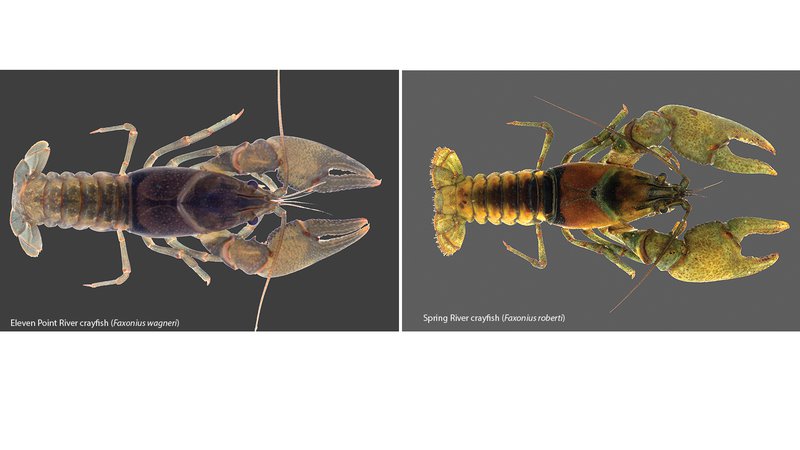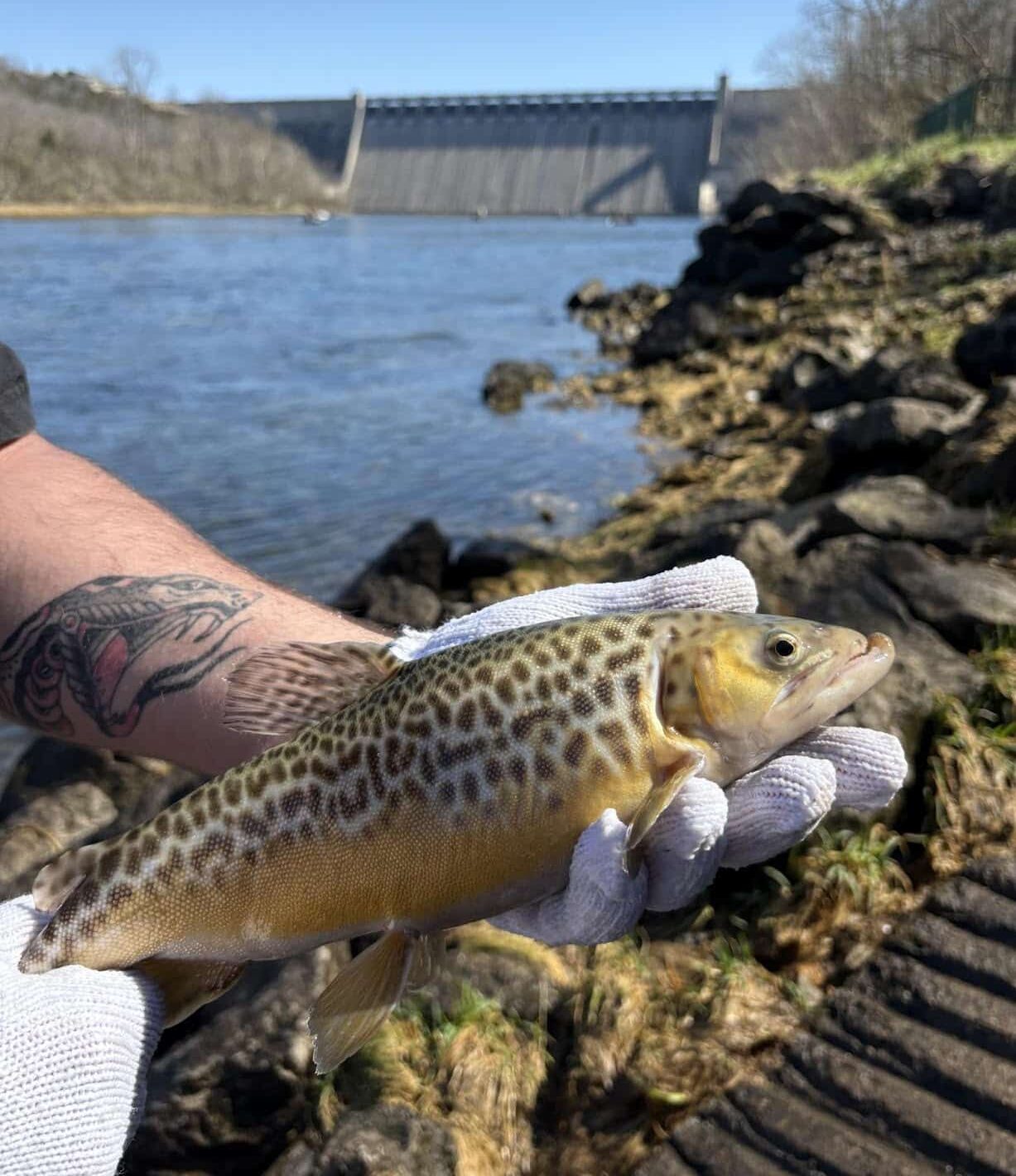New state crayfish discovered, named for AGFC biologist
BY Jim Harris
ON 04-04-2018

April 4, 2018
Jim Harris
Managing Editor Arkansas Wildlife Magazine
BENTON – Brian Wagner, while diving and catching hellbenders in the Eleven Point River with fellow Arkansas Game and Fish Commission biologist Kelly Irwin, found what seemed like an unusual crayfish in the river in north Arkansas back in 2005. Fast-forward almost 13 years later to last month, when national researchers published a paper revealing that the crayfish Wagner stumbled upon has been determined to be a previously unknown species. And, for his efforts, the researchers publishing the paper surprised Wagner by assigning the Latin name, Faxonius wagneri, to the scientific name of the discovery.
Its common name is the Eleven Point River crayfish.
This newly recognized crayfish species is one of two in the publication: A second has been attributed to Robert J. DiStefano of the Missouri Department of Conservation, named scientifically by the research authors Faxonius roberti. Found in the Spring and Strawberry rivers, the common name is the Spring River crayfish. Both crayfish were thought to be coldwater crayfish (Faxonius eupuctus) or hybrids, not their own species.
“I’m excited to see two new species of crayfish I helped discover be officially recognized, but what a surprise to see that they had named one after me! I had never imagined that something like this would happen, but I’m honored to welcome Faxonius wagneri to the list of crayfish species,” said Wagner, AGFC aquatic wildlife diversity biologist who has been with the agency for 29 years.
It’s not every day that a species is named for an AGFC employee. Arkansans, especially those only familiar with the gastronomically enticing bluish crayfish shipped north from Louisiana for springtime “crawdad boils,” may not realize that Arkansas is home to about 60 species of crayfish.
“The Southeastern United States is home to the most diverse amount of crayfish in the world, with about 350 species,” Wagner said. “Arkansas has the most varied species of any state west of the Mississippi River, but trails Tennessee, Georgia, Mississippi and Alabama for number of crayfish species.”
He recalled the day 13 years ago when he and Irwin were noticing coldwater crayfish in the Eleven Point River with different colors; some were olive and brown, while others were maroon with green claws, but both types had traits of the coldwater crayfish. Wagner explained that experts such as the research authors typically receive specimens in alcohol, so they don’t see the color differences that the biologists at the river might see. But, the researchers who examined these samples noted differences in the male reproductive structure from the coldwater crayfish, and they proceeded with DNA sampling, which showed that these crayfish were not a hybridization of the coldwater crayfish.
Because the U.S. Fish and Wildlife Service at the time had been petitioned to designate the coldwater crayfish under the Endangered Species Act, Wagner became involved in a study of that species in the Spring, Strawberry and Eleven Point rivers with the University of Arkansas, the Missouri Department of Conservation and the Carnegie Museum of Pittsburgh. This study eventually helped the national researchers realize that there were actually three different species that had been labeled coldwater crayfish, he said. The research paper was published March 23, revealing the new crayfish species wagneri, thrilling the AGFC employee.
“Usually the people that have a species named after them are ones who have done a lot of taxonomy work in that species group,” Wagner said. “I hadn’t done that. I’ve done a lot of field crayfish work, but as far as describing a species and keying them out, I hadn’t don’t that. I’ve always deferred to the experts.”
The adage “there’s nothing new under the sun” apparently isn’t true. New species are discovered from time to time in Arkansas. A new crayfish in southwest Arkansas was described a year ago and Irwin was instrumental in the discovery of a new salamander species in 2014, Wagner noted.
The 3-inch long Eleven Point River crayfish is considered a tertiary burrower, where burrowing (what those edible “mudbugs” typically do) is their last choice for hiding. They are found in big cold rivers with stable flow. The only burrowing they do is underneath rocks in the riffle in a stream. “They don’t make the mud chimneys that many people associate with crayfish,” Wagner said.
Wagner urged sportsman and others to not move a crayfish from one body of water to another; doing so can create a detrimental ecological effect. The Eleven Point River crayfish is only found in its namesake river; the Spring River crayfish is found in two rivers, he added. Somehow, the ringed crayfish, found further west in the Norfork River, has been introduced into the South Fork of the Spring River, a fairly small stream, Wagner said. “It has been spreading downstream and is replacing the Spring River crayfish. And when you have an extra dry year, it knocks the Spring River crayfish back, and the ringed crayfish seems better at surviving low water,” he said. “They’ve had ringed crayfish found in a tributary to the Eleven Point, too, but it hasn’t spread to where these species are. It’s just a matter of time before they do, though.”
Recent News

Catch a tiger by the tail(water)
Mar. 31, 2025
Subscribe to Our Weekly Newsletter E-mails
Don’t miss another issue. Sign up now to receive the AGFC Wildlife Weekly Newsletter in your mailbox every Wednesday afternoon (Waterfowl Reports are published weekly during waterfowl season and periodically outside the season). Fishing Reports arrive on Thursdays. Fill in the following fields and hit submit. Thanks, and welcome!

